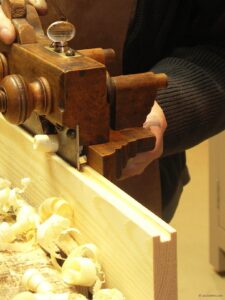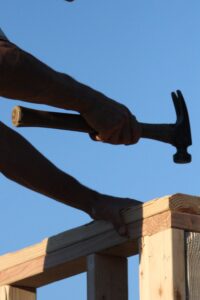Pine
Pine has been maligned for many decades as a cheap wood when in reality it’s quite expensive these days and there is nothing cheap about its quality and provision though centuries of woodworking. I use pine at the school for the first two projects in the course for a range of reasons not the least of which is the obvious appearance of growth rings that we can relate to in determining grain direction. I also like the fact that it has very visible knots in the wood to discuss the differences between encased knots, live knots, pin knots and grain configuration around these difficult areas that then result in difficult planing, chiselling and so on. Life is just like wood in many ways in that it comes with knots in it. Knots have to be considered, faced and dealt with. Sometimes you can cut them out of a board and get on with the job, other times they must remain in the board and you must work with them, consider their strengths and weaknesses both physically and aesthetically and, yes, decide if its character compliments or distracts the overall look in the final design. Sometime a knot demands all of the attention and so distracts from the overall appearance; dismissing the rest of the piece. At other times it creates an unacceptable imbalance. Knots in dovetails can be truly problematic and rarely do you find a craftsman use a knotted area for such work.
Pine has much conflict within its grain – enough to challenge a new artisan but not so much it discourages him. It’s good to go against the grain now and again, work out your frustrations, challenge its stubbornness and discover your own. It’s here that you find you must go in the exact opposite direction to achieve the harmony you seek beneath the sole of the plane and it’s here, when you change direction, that you discover peace.
Woods such as pine should never be undervalued by what we have done to make it a cheap and trashy wood. Stick-frame 4 x 2 American homes were built to be disposed of not last. When the hurricanes hit and tornadoes touch down they often disappear without trace in minutes. It’s devastating to see the news when floods hit and roofs upturned float way like boats on a storm-tossed sea, but at the end of the day, a few 4″ nails toe-nailing a wall together isn’t much insurance against such tribulation. My point of course is that the wood itself is innocent not guilty. It’s mostly what we did to the wood that trashed it as cheap or nasty not the structure and substance of being. Pine has been the backbone of our woodworking world for centuries. With respect, we record its provision worthy of much higher praise.





There is a common pine used throughout Europe called Redwood. This in no way compares to Redwoods growing in the USA. I have used this for 50 years now. It’s really much harder than many common pines and especially those offered by companies such as The Home Depot in the USA and B&Q in the UK. B&Q is most unlikely to know what they sell, or at least their staff won’t. But actually they do sometimes stock Redwood in their stores but still list it under whitewood or something similar. That’s also the case with The Home Depot too.